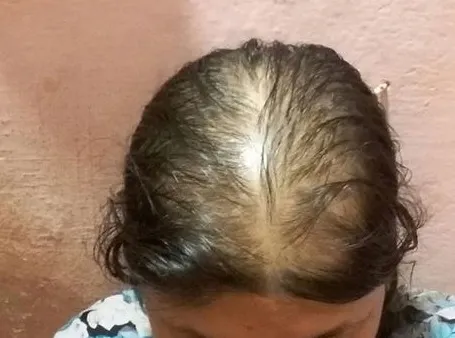Everyone craves for a long and lustrous hair. But not all of them are lucky enough for it. It is crucial to know the different stages of the natural hair cycle. This can resolve many hair loss issues and help with proper growth and nourishment of hair. If you are now going through the telogen phase of hair growth, it is only a minor part of the larger classification. Are you still confused? Read this article to learn what the causes are and how you can get an effective treatment for them.
Understanding Different stages of the Hair Growth Cycle
To understand the telogen phase of hair growth, you need to have a complete idea of the various stages encountered in the hair growth cycle.
- Anagen—Anagen is the first stage. It lasts from 2 and 6 years. In this phase, it is easier to determine how long the anagen follicle of hair can grow.
- Catagen– Catagen is the second phase of the hair growth cycle in adults. Most people refer to it as the regression phase. Further, the hair follicles weaken and separate from the dermal papilla. The total duration of this phase is about 1 or 2 weeks.
- Telogen– Telogen is the third phase. It usually lasts for five to six weeks.
- Exogen– Exogen is the fourth phase. It is the unofficial phase of hair growth that follows the telogen stage. The last stage where the hair follicles detach from the roots and falls out.
What exactly is the Hair Loss Telogen phase?
Telogen is the third and resting period of the hair follicle. This is because the hair stays in the follicles and does not seem to actively grow. The exact time duration of this phase is somewhere from 3 months to 100 days. As per studies, the anagen and telogen phase balance should be 14:1 to 12:1 in a healthy person.
Around 10 to 15% of the overall hairs on the body are dormant during this phase. All this depends on the location of the hair follicles. For instance, the duration of eyelashes depends on a few weeks. On the contrary it takes nearly a year to get to the frontal scalp region of hair follicles. In the telogen phase, around 50-100 hair strands are lost on a daily basis.
What are the causes of the Hair transition from the Anagen to telogen phase of hair growth?
There are many factors that contribute towards hair loss. Some of them are due to drug reactions, infectious diseases, nutritional deficiencies, and sometimes hair loss. One of the above common causes is unwanted hair loss, “Alopecia”. They are divided into different types of Alopecia hair growth stages.
Hair baldness pattern in Male
Androgenetic is the non-scarring type. This type occurs typically due to the disposition of androgen into the hair follicles.

It is also termed as male baldness. Dihydrotestosterone (DHT), the hormone that shortens the anagen phase, has a significant impact on it. Moreover, the result is fragile and sleek hair that ultimately stops growing.
Hair Baldness pattern in female
Unlike Males, females also experience hair baldness patterns. It is often identified as the thinning of the hair.

By understanding and addressing the women’s hair loss pattern, one can explore practical solutions.
Telogen Effluvium: Excessive Hair Shredding phase
Telogen Effluvium are determined by excessive shredding of hair. When the hair loss from the Telogen Effluvium diffuses few people may notice more loss of hair near the frontal scalp region.
Types of Telogen Effluvium
Two major types of Telogen Effluvium are:
1. Chronic Telogen Effluvium
This type of Telogen Effluvium is ongoing. This phase trigger the hair growth cycle and continues to progress rapidly. A few examples are Nutritional deficiencies or thyroid disorders.

In this type, the greater hair strands do not enter the telogen phase of hair growth cycle but rather prefer to stay in the rest phase. It stays in this phase for a longer duration. Due to this the hair follicle’s return to the growth phase is further delayed.
This effect is rapid and progressive. While the remaining hair follicles are in the developing hair phase, the number of telogen hair follicles is increasing. All this leads to the thinning of hair with minute shredding.
2. Acute Telogen Effluvium
Acute Telogen Effluvium is due to a short trauma phase. It happens as a result of a short trauma. These incidents momentarily disturb the normal hair cycle. These traumatic events may include:
- Surgery
- High Fever
- Grave illness
- Sudden weight loss
- Childbirth
- Emotional and mental stress
- Discontinuing birth control pills

However, once the triggering phase is finished, the follicle returns back to its growing phase. It soon produces fine tiny hairs sooner.
Symptoms of Telogen Effluvium
A few significant symptoms of Telogen Effluvium include:
- Thinning of the scalp area.
- Dry hair that quickly falls out.
- Noticeable hair loss in the restroom, shower, or beneath the pillow.
Tips to take care for fuller hair growth
Here are some tips that will help you have healthier and fuller hair. They are as follows:
-
Proper hair care
At least once or twice a week, make it a point to oil-nourish your hair. Look for hair care products that contain no sulphate or paraben. The product must suit your hair type whether its oily, dry or combination or color treated one.

Choosing the right conditioner may also help. Avoid washing your hair with hot water. Hair breaks when they are moist. Dry your hair naturally without using any heat styling appliances.
2. Have nutritious and healthy food
Focus on having healthy protein foods such as:
- Legumes
- Lean meats
- Fish
- Beans
- Dairy products

Follow Nutritious diet with health food containing folic acid, iron, Zinc, vitamin D, B12 and C.
3. Reduce the amount of stress
Many people may think can stress cause hair loss? The answer is a big ‘YES’. So in order to stop worrying try indulging into stress-buster activities such as meditation, Yoga, counseling and few breathing exercises.

This will help relieve anxiety and tension which in turn will reduce the amount of hair breakage.
Conclusion
It can be somewhat hard to understand the telogen phase of the hair growth cycle. But it is essential for managing your hair loss Journey. It is crucial to identify the underlying causes and seeking appropriate treatment options. Such individuals experiencing telogen effluvium can take healthy steps to promote hair growth and regain their confidence.
FAQ’s
- How will I know if I am in the telogen phase of hair growth?
Ans: You may notice increased hair in your hair brush or under the pillow, on your couch, and even in shower drains. It is important to note that some of the hair loss is entirely normal. But if you are facing a frequent amount of hair shredding, then it is better to visit a healthcare professional.
2. Can I go bald due to my telogen effluvium phase?
Ans: Telogen effluvium phase leads to hair loss. However, most individuals do not experience complete baldness. Few undergo hair thinning or shed a lot of hair on a daily basis.
3. Can I reverse my telogen effluvium phase?
Ans: You may be unable to reverse your telogen effluvium phase completely. In case of temporary reasons it may take six weeks for the hair follicles to grow. In the chronic telogen effluvium phase, you can go for professional hair transplant surgery.









